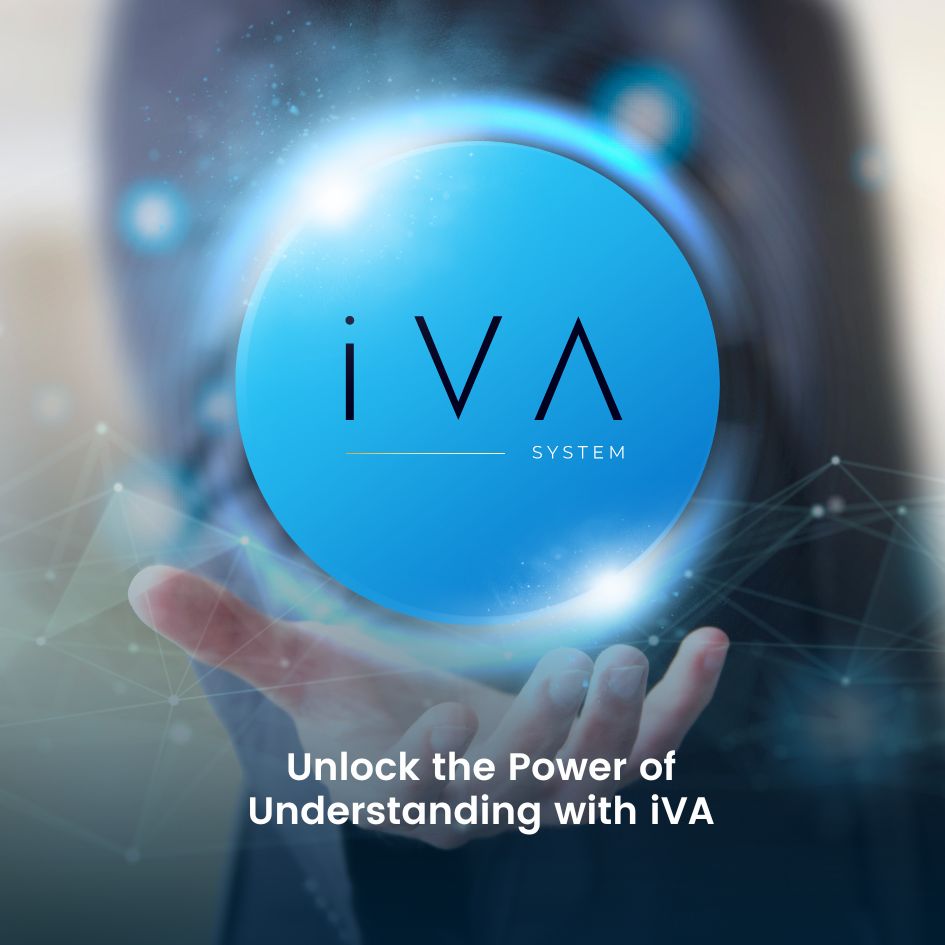Why your Institution is not performin at its Optimal
by Fastbrand Copywriter | 11.04.2024
In today’s fast-paced digital era, communication plays a pivotal role in the success of educational institutions. However, as technology evolves and communication preferences shift, traditional methods of student engagement, such as email, phone calls, and web forms, are becoming less effective. With new generation students expecting instant responses, personalised interactions, and seamless communication experiences, it has become increasingly inevitable for institutions to adopt modern solutions that cater to these evolving needs. While old-school communication methods served their purpose in the past, they are now facing challenges in meeting the expectations of the younger generation.
Here are the primary reasons why your Institution is underperforming and overspending on its marketing efforts and internal student recruitment operational processes:
Impersonal: Emails can feel impersonal compared to other forms of communication like instant messaging or social media, which might be preferred by the new generation.
Slow Response Time: Many people, especially younger generations, expect quick responses. Emails can sometimes have a slower turnaround time compared to instant messaging platforms.
Very Low Open Rate (30% Average): With the sheer volume of emails received daily, it’s common for many emails to go unopened or unnoticed, leading to a low open rate. This can result in important messages being missed by new generation customers or students.
Potential for Misunderstandings: Tone and context can be easily misinterpreted in written communication, leading to misunderstandings or conflicts, especially among those who are not accustomed to formal email etiquette.
Inundation: New generation customers or students might already receive a large volume of emails daily, leading to email overload and causing important messages to get lost in the shuffle.
Limited Engagement: Emails often lack interactive features, making it difficult to engage recipients in meaningful discussions or collaborative activities, which might be more appealing to the new generation.
Mobile Unfriendliness: While email is accessible on mobile devices, the user experience may not be as seamless or intuitive as other communication platforms designed specifically for mobile use.
Attachment Limitations: Sending large files via email can be cumbersome due to attachment size limitations, which might hinder the sharing of multimedia content that is popular among the new generation.
Privacy Concerns: Email security breaches and privacy concerns are increasingly common, which may make new generation customers or students wary of sharing sensitive information over email.
Lack of Instant Gratification: Compared to instant messaging or social media, where responses are immediate, emails require patience for a reply, which may not align with the instant gratification mindset of the new generation.
Resistance to Formality: The new generation often prefers informal and casual communication styles, while emails typically follow more formal conventions, leading to a disconnect in communication preferences.
Manual Replies to Semi-automated Blasts: Many emails, especially marketing or promotional ones, are sent en masse using semi-automated tools. This can lead to recipients feeling like just another name on a list rather than valued individuals, diminishing the effectiveness of email as a communication method for the new generation.

"The new generation often prefers informal and casual communication styles."
SMS
Limited Media Sharing: SMS primarily supports text messages and has limited capabilities for sharing multimedia content like photos, videos, or documents, which are commonly shared on instant or social messaging platforms.
Lack of Group Chat Features: Group messaging on SMS lacks the advanced features and organisation found in dedicated group chat functionalities of instant or social messaging apps.
Reduced Interactivity: SMS lacks the interactive features such as polls, stickers, gifs, or reactions that are prevalent in instant or social messaging, making it less engaging for the new generation.
Character Limitations: SMS often imposes a character limit per message, which can be restrictive for expressing complex ideas or detailed information, unlike instant or social messaging where longer messages are permitted.
Cost Concerns: Although SMS is generally included in mobile plans, charges may apply for international messages or premium services, which can be a deterrent for cost-conscious new generation users who prefer free messaging apps.
Privacy and Security: SMS messages are not as secure as messages sent through encrypted instant or social messaging platforms, raising concerns about privacy and the potential for interception or hacking.
No Read Receipts or Typing Indicators: SMS lacks features like read receipts or typing indicators, leaving users uncertain about the status of their messages or whether the recipient is actively engaged in the conversation.
Dependence on Cellular Network: SMS relies on cellular network coverage, making it less reliable in areas with poor reception or during network congestion compared to messaging apps that can use Wi-Fi or data connections.
Limited Customisation Options: SMS offers limited customisation options for message formatting, themes, or personalisation compared to the extensive customisation available in instant or social messaging platforms.
Integration with Other Services: Instant or social messaging apps often integrate with a wide range of services and platforms, offering features like voice and video calling, file sharing, or third-party app integrations, which are not available or less seamless with SMS.
Forms
Lack of Real-time Interaction: Web forms typically do not offer real-time interaction like instant messaging or social media platforms, resulting in delayed responses and potentially hindering quick communication.
Impersonal Communication: Filling out a web form lacks the personal touch and conversational nature of instant or social messaging, which may be less engaging for the new generation.
Limited Engagement: Web forms often provide a static interface with predefined fields, offering limited opportunities for engagement or interaction beyond submitting information.
Potential for Frustration: Complex or lengthy web forms can be tedious to fill out, leading to user frustration, especially for the new generation accustomed to quick and seamless communication methods.
Inefficient for Dynamic Conversations: Web forms are not designed for dynamic conversations or discussions, making it challenging to address follow-up questions or clarifications in a timely manner.
No Multimedia Support: Unlike instant or social messaging, web forms typically do not support multimedia content such as images, videos, or gifs, limiting the expression of ideas or emotions.
Limited Feedback Mechanism: Web forms often lack features for providing instant feedback or confirmation of receipt, leaving users uncertain about the status of their submissions.
Dependency on Form Structure: Communication through web forms is constrained by the predefined structure and fields of the form, which may not always align with the needs or preferences of the new generation.
Privacy Concerns: Depending on how data collected through web forms is handled, there may be privacy concerns regarding the security and confidentiality of the information submitted, potentially deterring new generation users.
Difficulty in Building Rapport: Building rapport or establishing a connection with users through web forms can be challenging compared to the more interactive and conversational nature of instant or social messaging platforms.
Phone Calls
Preference for Text-Based Communication: The new generation often prefers text-based communication over phone calls, finding it more convenient, less intrusive, and easier to manage.
Asynchronous Communication: Instant or social messaging allows for asynchronous communication, enabling users to respond at their own pace, unlike phone calls which require immediate attention and response.
Lack of Multitasking: Phone calls demand full attention and prevent multitasking, whereas instant or social messaging allows users to communicate while simultaneously engaging in other activities.
Anxiety and Discomfort: Many individuals, especially younger generations, experience anxiety or discomfort when making or receiving phone calls, preferring the asynchronous and less confrontational nature of text-based communication.
Difficulty in Managing Conversations: Phone calls lack the organisation and archiving features of instant or social messaging platforms, making it challenging to manage and reference past conversations or information discussed.
Privacy Concerns: Phone calls may raise privacy concerns for the new generation, especially when discussing sensitive or personal matters, as they lack the encryption and security features commonly found in messaging apps.
Inconvenience: Phone calls can be perceived as inconvenient, requiring both parties to be available and willing to engage in real-time conversation, unlike messaging which allows for flexibility in response times.
Lack of Visual Cues: Phone calls lack visual cues such as emojis, gifs, or stickers, which can hinder expression and communication, particularly for the new generation accustomed to visual communication in messaging apps.
Difficulty in Sharing Information: Sharing information during phone calls can be cumbersome compared to instant messaging, where users can easily share links, documents, or multimedia content.
Preference for Record Keeping: Instant or social messaging platforms offer the ability to archive and search conversations, facilitating record-keeping and reference, which is lacking in phone calls where information discussed may be forgotten or lost.
WhatsApp for Business
Limited Availability: Manned WhatsApp for Business relies on human operators, leading to limited availability and delays in response times, which may not align with the instant gratification expectations of the new generation.
Inconsistent Response Quality: The quality of responses in manned WhatsApp for Business can vary depending on the skills, knowledge, and mood of human operators, leading to inconsistencies and a lack of reliability in customer or student support.
Scalability Challenges: Manned WhatsApp for Business has limitations in scalability, as it relies on human resources to handle incoming queries, making it difficult to support a large volume of concurrent interactions efficiently.
Higher Operational Costs: Manned WhatsApp for Business incurs higher operational costs due to the need for human operators, which can be unsustainable for businesses or institutions compared to AI-driven virtual assistants.
Dependency on Human Intervention: Manned WhatsApp for Business requires human intervention to handle complex queries or escalate issues, resulting in delays, errors, and a less seamless user experience compared to fully automated AI-driven virtual assistants.
Difficulty in Handling Peak Periods: During peak periods or surges in query volumes, manned WhatsApp for Business may struggle to cope with the influx of requests, leading to longer response times and frustration among users.
Limited Ability to Learn and Improve: Manned WhatsApp for Business lacks the ability to learn from interactions and improve over time, as human operators may not have access to comprehensive analytics or insights for continuous refinement.
Inability to Handle Multitasking: Human operators of manned WhatsApp for Business may struggle to handle multiple conversations simultaneously, leading to slower response times and a less efficient support process.
Perception of Artificiality and Inauthenticity: Despite being manned by humans, WhatsApp for Business interactions may still come across as artificial or inauthentic, failing to establish genuine connections or rapport with new generation users who value authenticity and empathy in communication.
Privacy Concerns: Manned WhatsApp for Business raises privacy concerns as users may be uncomfortable sharing sensitive information with human operators, especially if they prefer to keep their personal and professional communications separate.
Traditional Scripted and Manned Chatbots
Limited Flexibility: Traditional scripted and manned chatbots are often rigid in their responses, lacking the ability to adapt to diverse queries or unexpected user interactions, which can frustrate new generation users seeking personalised and dynamic assistance.
Dependency on Human Intervention: Manned chatbots rely on human operators to handle complex queries or escalate issues, which can result in delays, inconsistencies, and a less seamless user experience compared to fully automated AI-driven virtual assistants.
Inconsistent Quality of Service: The quality of service provided by manned chatbots may vary depending on the availability, skills, and training of human operators, leading to inconsistencies and a lack of reliability in customer or student support.
Limited Scalability: Manned chatbots have limitations in scalability, as they require human resources to handle incoming queries, making it challenging to support a large volume of concurrent interactions or scale operations efficiently.
Higher Operational Costs: Manned chatbots incur higher operational costs due to the need for human operators, which can be unsustainable for businesses or institutions compared to fully automated AI-driven virtual assistants.
Potential for Human Error: Human operators of manned chatbots may make mistakes, misunderstand user queries, or provide incorrect information, leading to errors, confusion, and dissatisfaction among new generation users.
Dependency on Training and Supervision: Manned chatbots require ongoing training, supervision, and management of human operators, which can be resource-intensive and time-consuming compared to AI-driven virtual assistants that can self-learn and improve over time.
Limited Availability: Manned chatbots are typically available only during specific hours or shifts when human operators are active, which may not align with the 24/7 availability expectations of new generation users who prefer instant and round-the-clock support.
Difficulty in Handling Complexity: Manned chatbots may struggle to handle complex queries or scenarios that require advanced problem-solving skills or access to extensive knowledge bases, leading to subpar support experiences for new generation users.
Perception of Artificiality and Inauthenticity: Manned chatbots, despite having human operators, may still come across as artificial or inauthentic in their interactions, failing to establish genuine connections or rapport with new generation users who value authenticity and empathy in customer or student support.
In conclusion, embracing AI-driven solutions and automation tools, such as Intelligent Virtual Assistants (IVA), can revolutionise the way educational institutions engage with students throughout their journey. By leveraging the power of AI and automation, institutions can enhance their pre-sales, student onboarding, and post-sales processes, providing a seamless and personalised experience for every student. As we navigate the digital age, it’s imperative for institutions to stay ahead of the curve and adapt to the changing landscape of student communication. With the right tools and strategies in place, institutions can unlock new opportunities for growth, innovation, and student success.
"Offer round-the-clock assistance and support"
The IVA System

A game-changing platform designed to revolutionise student recruitment and drive enrolment growth. By harnessing the power of AI-driven communication, engagement, and support, The IVA System empowers your institution to deliver exceptional experiences to prospective students, ensuring prompt and personalised interactions around the clock.
“By leveraging The IVA System, you can stay ahead of the competition, drive enrolment growth, and position your institution for success in 2025 and beyond.”
Don’t miss out on this opportunity to transform your student recruitment efforts – take the next step towards success with The IVA System today!



Next-Level Enrolment for 2025: 8 Ways to Optimise Your Student Recruitment Efforts



